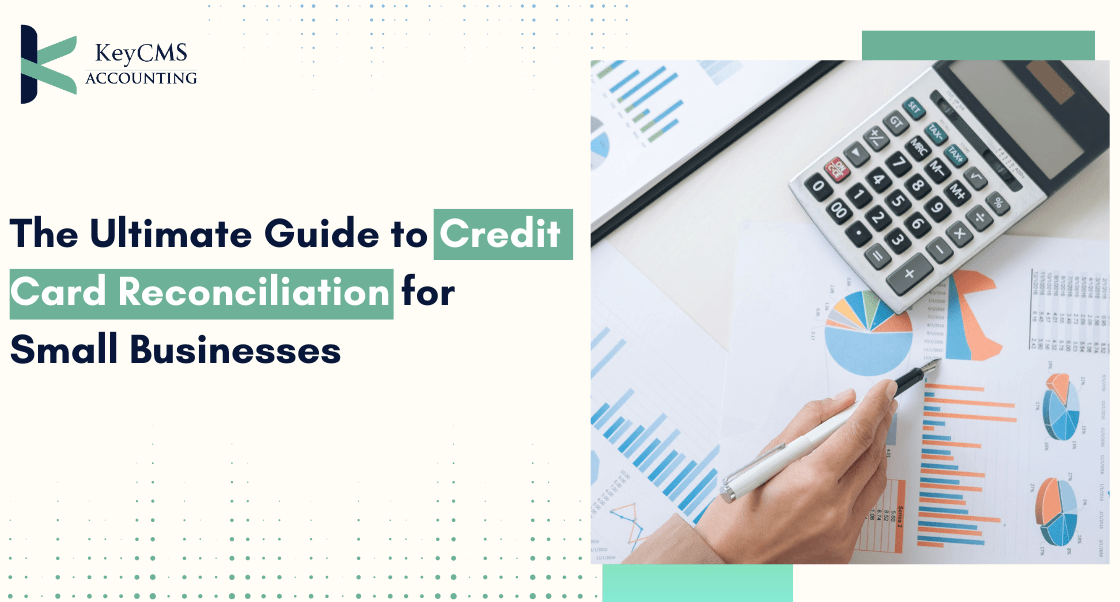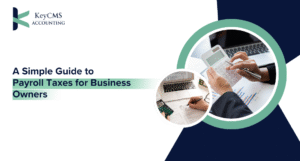Running a small business means juggling countless responsibilities—from managing employees and serving customers to keeping track of your finances. One area often overlooked but critical for long-term success is credit card reconciliation.
If you’ve ever noticed mismatched numbers between your books and your credit card statement, you’re not alone. Errors, fraudulent charges, or missed entries can slip through the cracks without proper reconciliation. This is why understanding and implementing an effective reconciliation process is vital for small businesses.
In this guide, we’ll break down what credit card reconciliation is, why it matters, and how you can streamline the process to save time, prevent mistakes, and ensure your financial health.
What Is Credit Card Reconciliation?
Credit card reconciliation is the process of comparing your business’s internal financial records with your monthly credit card statements. The goal is to ensure that every transaction is accurate, legitimate, and accounted for in your books.
Think of it as a financial health check-up—it helps confirm that what you’ve spent (or earned in refunds/returns) matches exactly what your credit card company reports.
Why Is Credit Card Reconciliation Important for Small Businesses?
For small businesses, every dollar counts. Even minor discrepancies can snowball into bigger problems if ignored. Here’s why reconciliation is so important:
Prevents Fraud and Errors
Unauthorized charges or double transactions can happen more often than you think. Reconciliation ensures you catch them early.
Accurate Financial Reporting
Your financial statements reflect the true health of your business. Inaccurate records can lead to wrong decisions, missed deductions, or compliance issues.
Tax-Ready Records
Tax season becomes a nightmare if your books don’t align with your statements. Reconciliation provides a clean, organized record trail for auditors and accountants.
Better Cash Flow Management
By reconciling regularly, you’ll know exactly what funds are available—helping you make smarter spending and investment decisions.
The Step-by-Step Process of Credit Card Reconciliation
Here’s a simple breakdown of how small businesses can perform reconciliation effectively:
Step 1: Gather Your Records
- Monthly credit card statements
- Receipts (paper or digital)
- Accounting system records
Step 2: Compare Transactions
Go line by line through your statement and match each charge with your receipts or internal records.
Step 3: Identify Discrepancies
Look for:
- Missing receipts
- Duplicate charges
- Unauthorized transactions
- Incorrect amounts
Step 4: Adjust Your Books
If there are legitimate expenses not recorded, add them. If errors exist, adjust your records accordingly.
Step 5: Investigate Issues
For fraudulent or incorrect charges, contact your credit card provider immediately.
Step 6: Confirm Balances Match
Once all adjustments are made, your internal records and credit card statement should align perfectly.
Common Challenges Small Businesses Face in Reconciliation
While the process sounds straightforward, small businesses often run into these challenges:
- Lost Receipts: Missing documentation makes it harder to verify charges.
- High Transaction Volume: Businesses with frequent small purchases can struggle to keep track.
- Manual Errors: Recording transactions by hand increases the risk of mistakes.
- Time Constraints: Business owners often delay reconciliation, causing bigger issues later.
Best Practices for Credit Card Reconciliation
To make reconciliation easier, follow these best practices:
- Reconcile Monthly (at Minimum)
Waiting months to reconcile increases the risk of missing errors. Do it monthly—or even weekly if you handle many transactions. - Go Digital with Receipts
Use apps or accounting software that let you snap and store receipts instantly. - Automate Where Possible
Cloud-based accounting tools like QuickBooks, Xero, or FreshBooks can import credit card data and match transactions automatically. - Delegate to a Professional
If you’re overwhelmed, outsourcing to an accounting service ensures accuracy and saves valuable time. - Create a Standardized Process
Document your reconciliation process so it’s consistent each month.
The Benefits of Outsourcing Credit Card Reconciliation
For many small businesses, outsourcing reconciliation services is the smartest move. Here’s why:
- Saves Time: Business owners can focus on growth rather than bookkeeping.
- Ensures Accuracy: Professionals spot errors faster and keep books tax-ready.
- Improves Security: Outsourced services can identify fraud more quickly.
- Scales with Growth: As your transaction volume increases, outsourced teams can handle the workload without stress.
Tools That Simplify Credit Card Reconciliation
Here are some widely used tools small businesses can leverage:
- QuickBooks Online – Syncs directly with bank and credit card accounts.
- Xero – Offers smart reconciliation features with AI-based matching.
- Zoho Books – Affordable for small businesses with integrated expense tracking.
- Expensify – Great for capturing receipts and tracking employee expenses.
Final Thoughts
Credit card reconciliation might not be the most glamorous part of running a small business, but it’s one of the most important. By staying on top of your financial records, you reduce errors, prevent fraud, improve tax readiness, and gain a clearer picture of your cash flow.
Whether you choose to handle reconciliation in-house with software or outsource it to professionals, the key is consistency. The more regularly and accurately you reconcile, the stronger your financial foundation will be.
At the end of the day, credit card reconciliation isn’t just about balancing numbers—it’s about building trust in your business’s financial health.




